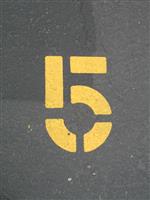-
Welcome to Grade 5 Math!

This page will give an overview of 5th grade math at Green Hills School. Described below are the focus of study for the year, the mathematical practices and a list of the units of study.
Focus
The major work of math in Grade 5 will focus on these areas:
- Gaining a strong understanding of the place value system as it relates to multiplication and division.
- Perform operations with multi-digit whole numbers and with decimals to the hundredths.
- Use equivalent fractions as a strategy to add and subtract fractions.
- Apply and extend previous understandings of multiplication and division to multiply and divide fractions.
- Geometric measurement: Understand concepts of volume and relate volume to multiplication and addition. Geometric work is not based on only formulas, but students using pictures and objects to build and derive the understanding of how to calculate volume for rectangular prisms and other 3D shapes.
Additional work will be in these areas and infused throughout the modules:
- Writing and interpreting numerical expressions in preparation for working with variables in 6th grade.
- Analyzing and investigating patterns and relationships as foundations of algebra concepts.
- Converting like measurement units within a given system, such as feet to inches and meters to millimeters.
- Representing and interpreting data in a variety of tables, graphs and charts.
- Graphing points on a coordinate plane to solve mathematical and real world problems.
- Classify two-dimensional figures into categories based on their properties.
We want our students to be great problem solvers and have many strategies to solve math problems. In class, the children will learn a variety of instructional strategies that will become foundational for work from grades 1 - 5. Resources will be added to this page to help you assist your child at home.
"Procedural fluency is the ability to apply procedures accurately, efficiently, and flexibly; to transfer procedures to different problems and contexts; to build or modify procedures from other procedures; and to recognize when one strategy or procedure is more appropriate to apply than another." National Council of Teachers of Mathematics
By the end of Grade 5 , the goal is for students to be fluent with multi-digit multiplication using the standard algorithm. We are also looking for students to be fluent with addition, subtraction and multiplication of fractions (concepts, skills and problem solving). Parents can help at home by continuing to help students practice multiplication and division facts up to 12. Fluency in this area is an important step for Grade 6 as the students will begin to work with ratios and rates, an important foundation for Algebra 1.
Mathematical Practices
In addition to the work with skills, procedures and problem solving, students spend time in class working on the mathematical practices. These practices are based on the National Council of Teachers of Mathematics research. Teachers are helping students become strong mathematicians through these processes.
MP1: Make sense of problems and persevere in solving them.
MP2: Be able to reason abstractly and quantitatively.
MP3: Construct or build viable arguments (proofs) and critique the reasoning of others at an age appropriate level.
MP4: Create mathematical models from real world situations.
MP5: Use appropriate tools strategically, like pencil and paper, calculators, number lines, tape diagrams, etc. to help solve problems in flexible ways.
MP6: Attend to precision in their answers and interpretations of their answers in context.
MP7: Look for and make use of the structure of patterns, equations and expressions to help solve more challenging problems.
MP8: Look for and express regularity in repeated reasoning.Units of Study
Eureka Math is comprised of units called Modules. The modules build on each other, creating a unified sequence of topics to help build student understanding and the development of computation skills and the ability to reason mathematically. A lot of time is spent on building conceptual understanding, meaning we spend a lot of time with models such as drawings and objects, in order to build a strong foundation of understanding how math works, not just how to solve quick addition or subtraction equations.
Module 1: Place Value and Decimal Fractions
Module 2: Multidigit Whole Number & Decimal Fraction Operations
Module 3: Addition & Subtraction of Fractions
Module 4: Multiplication & Division of Fractions & Decimal Fractions
Module 5: Addition & Multiplication with Volume and Area
Module 6: Problem Solving with the Coordinate Plane
-
Gr. 5 Eureka Math
This link is to the Eureka Math program through the EngageNY website as it is a very easy site to navigate.

